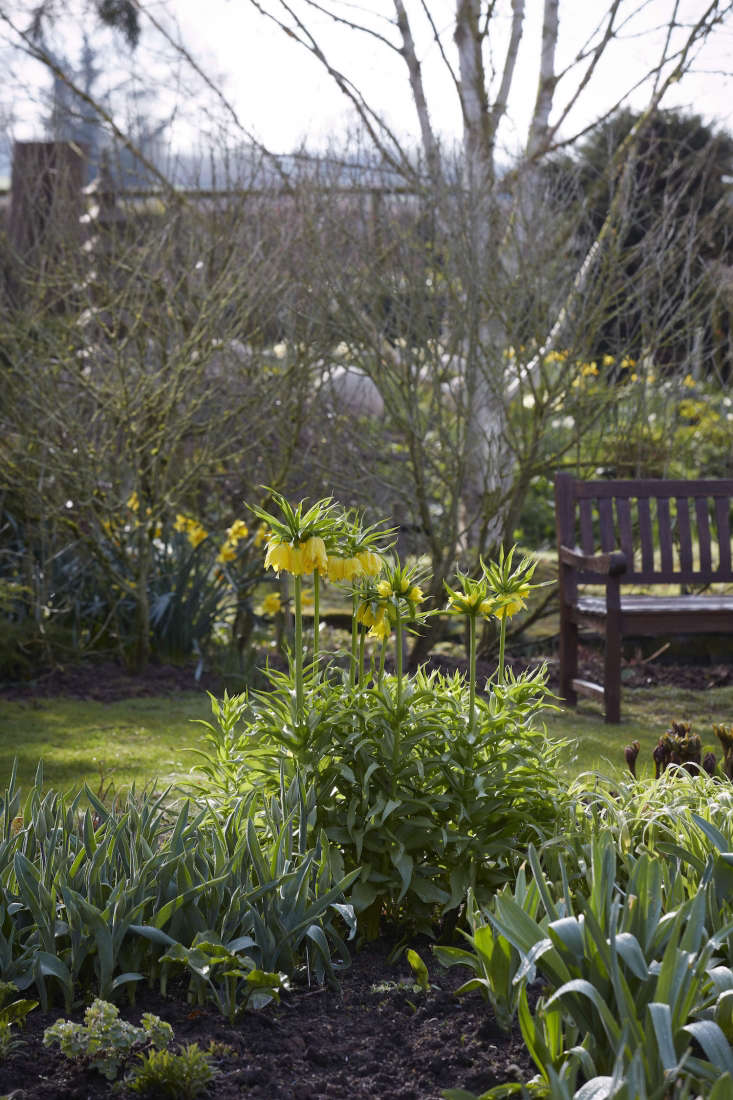The Crown imperial, Fritillaria imperialis, is undoubtedly the diva of the April garden—a spring bulb that’s topped with a dramatic cluster of vivid nodding flowers and a crown of spiky leaves that looks like a tribal headdress. It’s an extraordinary looking plant. But it’s also just one fritillaria, a group that’s part of the Lily family.
Read on to see some of our favorites:
Photography by Britt Willoughby Dyer for Gardenista.




For shade gardens, there’s F. camschatcensis, which is native to north east Asia and north America, and has stunning deep purple, almost black nodding flowers appearing in late May. It’s an elegant plant that prefers woodland conditions and a layer of leaf mould.
Cheat Sheet
- You can plant snakes head fritillaries in borders amongst other spring flowers such as hellebores or narcissus, but it will be happiest in damp grass or meadows.
- It prefers a heavier damp soil to lighter, free draining soils. If you want a natural effect then scatter bulbs over grass by hand and then plant them where they fall.
- For F. imperialis, plant the enormous bulbs deep (around 8 inches) and 8 inches apart and on their side. As with other spring bulbs, if you cut the flowers or deadhead them leave as many leaves as possible and only remove the leaves once they have died back. Although with a heavy foxy aroma these aren’t the best flowers to bring into the house.
Keep It Alive
Crown imperials will need dividing every few years to maintain their vigour – dig up bulbs in late summer and separate bulbs before replanting. To prevent rot add some horticultural grit to the bottom of the planting hole. It can take a while for these plants to flower – sometimes
Moisture loving snakes head fritillaries won’t thrive in a pot, but Imperialis will cope better with more free-draining conditions.

See more of our springtime favorites:
- Bulbs & Tubers: A Field Guide.
- April in Bloom: Visit the NY Botanical Garden.
- Test Drive: Which Cut Flowers Last Longest?









Have a Question or Comment About This Post?
Join the conversation